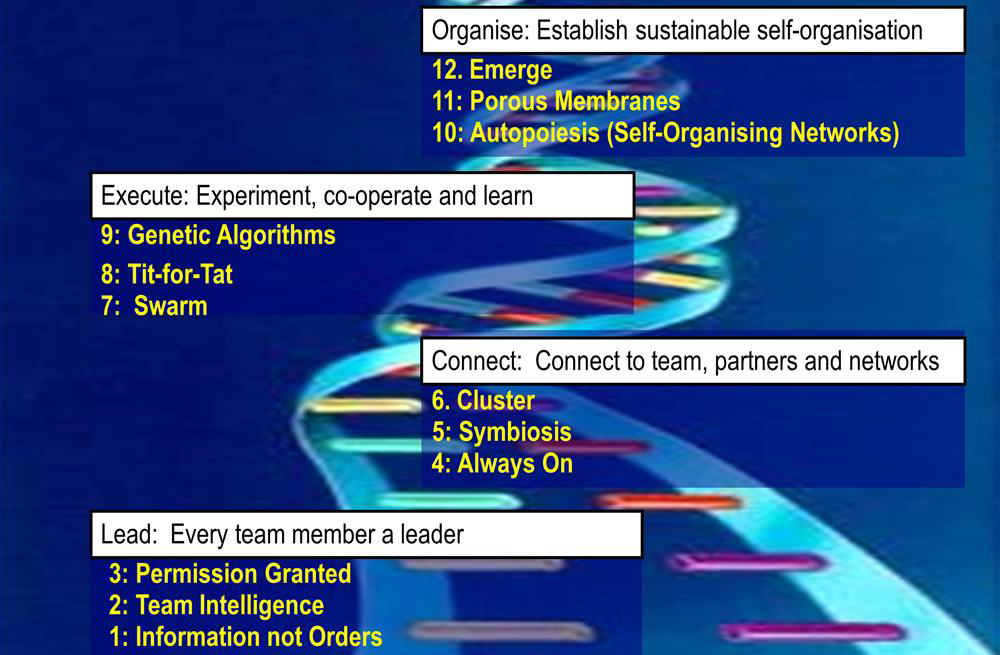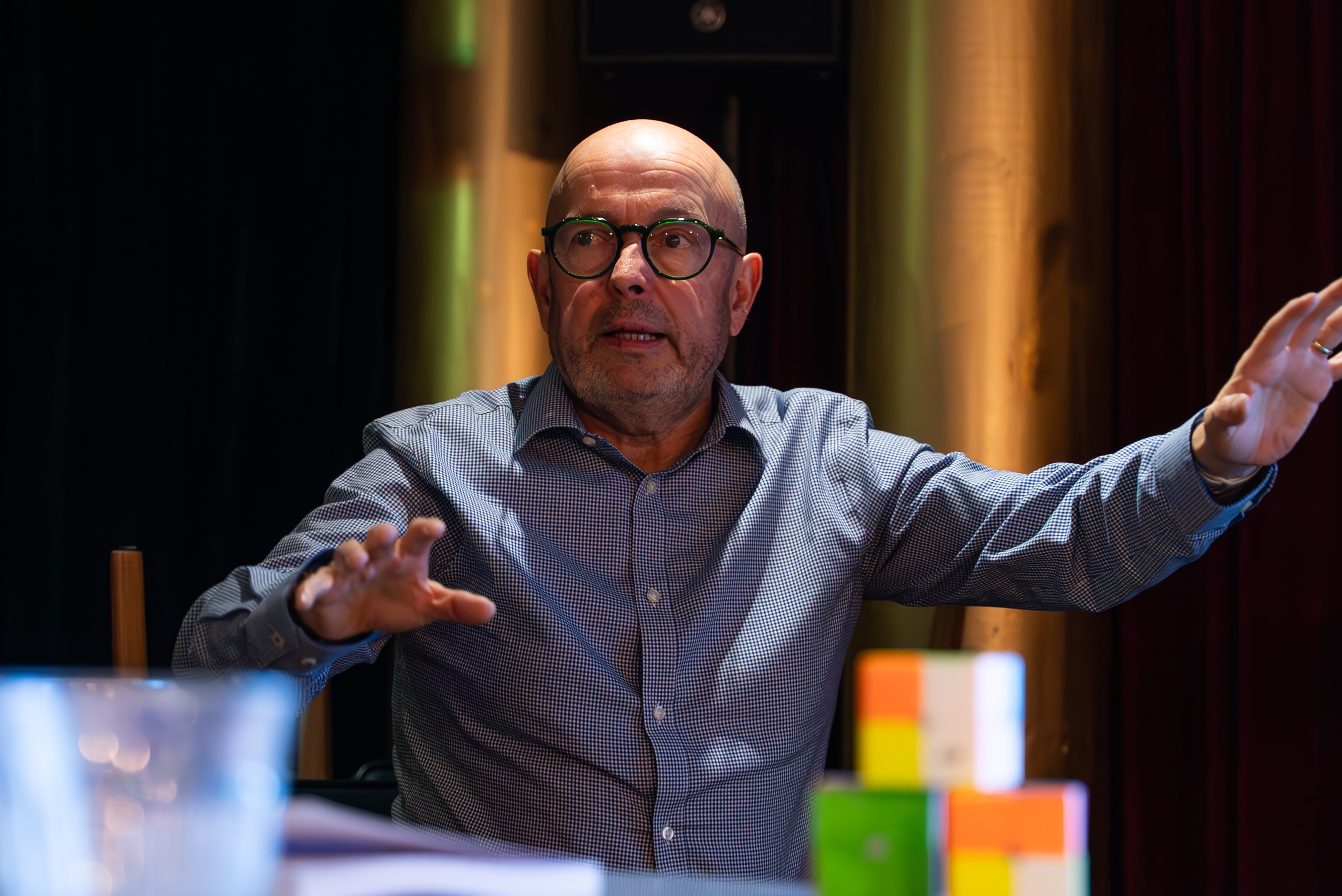White paper - 10 practical leadership models for high performing teams: a leadership playbook
By Ken Thompson, Aug 8, 2020 Last updated Jun 13, 2025
Summary
Practical leadership models summarise the essential practicalities of key management topics in 60 seconds so you can immediately apply them.
Focus
The models in this document address the key management topic of creating and operating high performing teams covering the following aspects:
- Team health check/assessment
- Team setup/foundations
- Team leadership
- Virtual teams
- Team development
Contents
- 7 habits of highly successful team leaders
- Racetrack integrated model of high performing teams
- 7 common mistakes teams make under pressure
- RAPPORT model of project team set-up
- Spinning top model - 4 dysfunctional team stereotypes
- Martini model of effective virtual teams
- 7 team decision-making methods
- 4 types of team meeting and 5 key meeting roles
- 4 models of teamwork top performing teams exploit
- Bioteams model: high performance based on nature's team
Model #1: Seven habits of highly successful team leaders
Aspect
Operational team leadership
Why and when do you need this model
The seven habits model helps you successfully juggle the multiple dimensions which ensure a team stays ambitious, motivated, learning, supportive and performing. Without such a model, especially when you find yourself under pressure as a leader, it is likely you will fixate on a couple of the more urgent dimensions but neglect the others. You may deliver your project but destabilise your team and damage your reputation as a team leader!
The bare essentials
Effective team leaders manage the team individuals as:
- People
- Professionals
- Colleagues (team members)
They also support and manage the whole team’s:
- Workload
- Energy levels
- Customers
- Practices
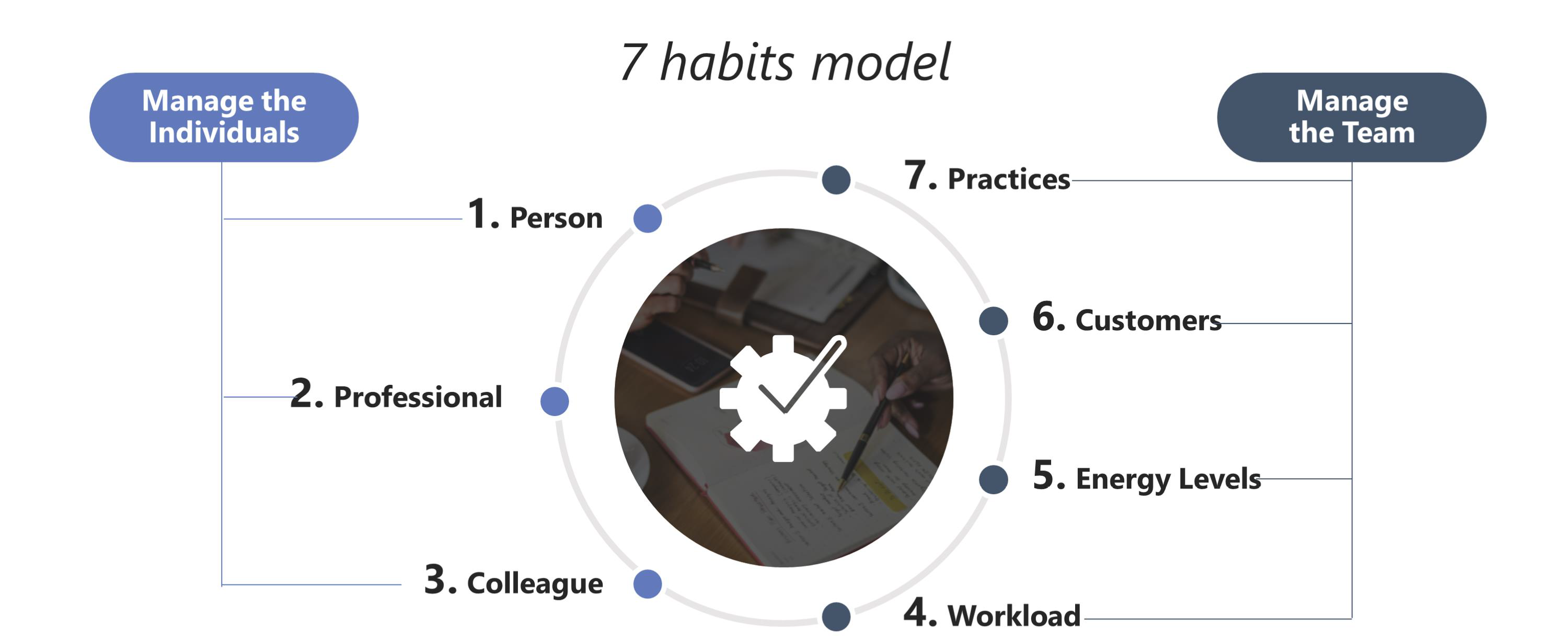
Model #2: Racetrack integrated model of high performing teams
Aspect
Team setup and team development
Why and when do you need this model
The Racetrack model is a simple sustainable model for setting up any team for success. It recognises that creating a team is a hybrid project which requires you to concurrently do both change management and process development.
The bare essentials
Sustainable teams address the unique change issues of each team member:
- Insight & relationships
- Understanding & influencing
- Commitment
- Support & development
Whilst they also address the process fundamentals of the whole team:
- Communications
- Meetings
- Alignment & accountability
- Support & systems
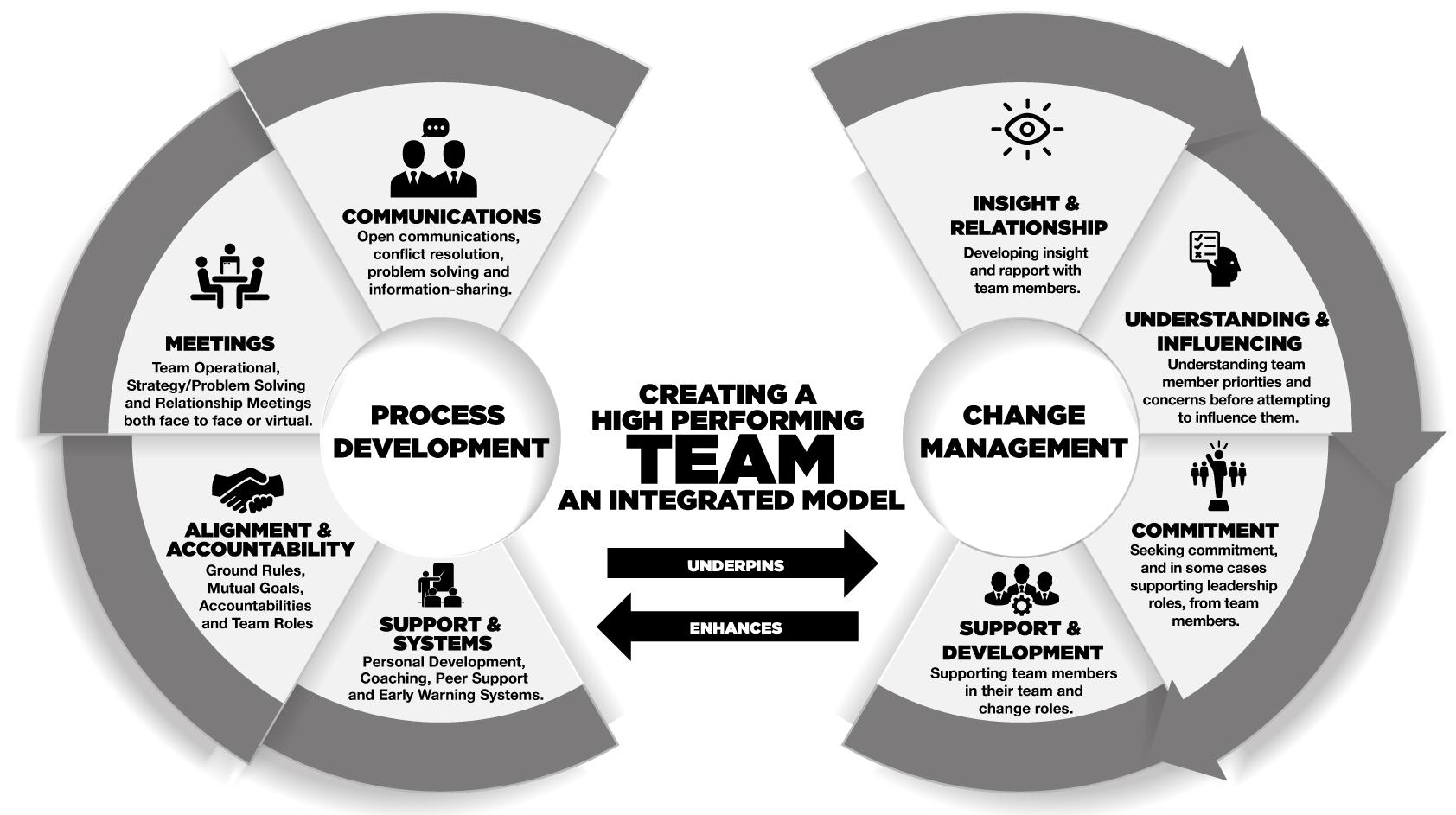
Model #3: Seven common mistakes teams make under pressure
Aspect
Team assessment and team development
Why and when do you need this model
The seven most common mistakes model provides a simple checklist you can use to perform a quick health check on any team.
The bare essentials
The seven mistakes are:
- Poor time management
- Avoidable operational errors
- Mismanagement of information
- Not reviewing or learning from previous mistakes
- Having a plan but not following it
- Poor division of labour (e.g. no roles)
- No ground rules (e.g. no agreed values or not following agreed values)
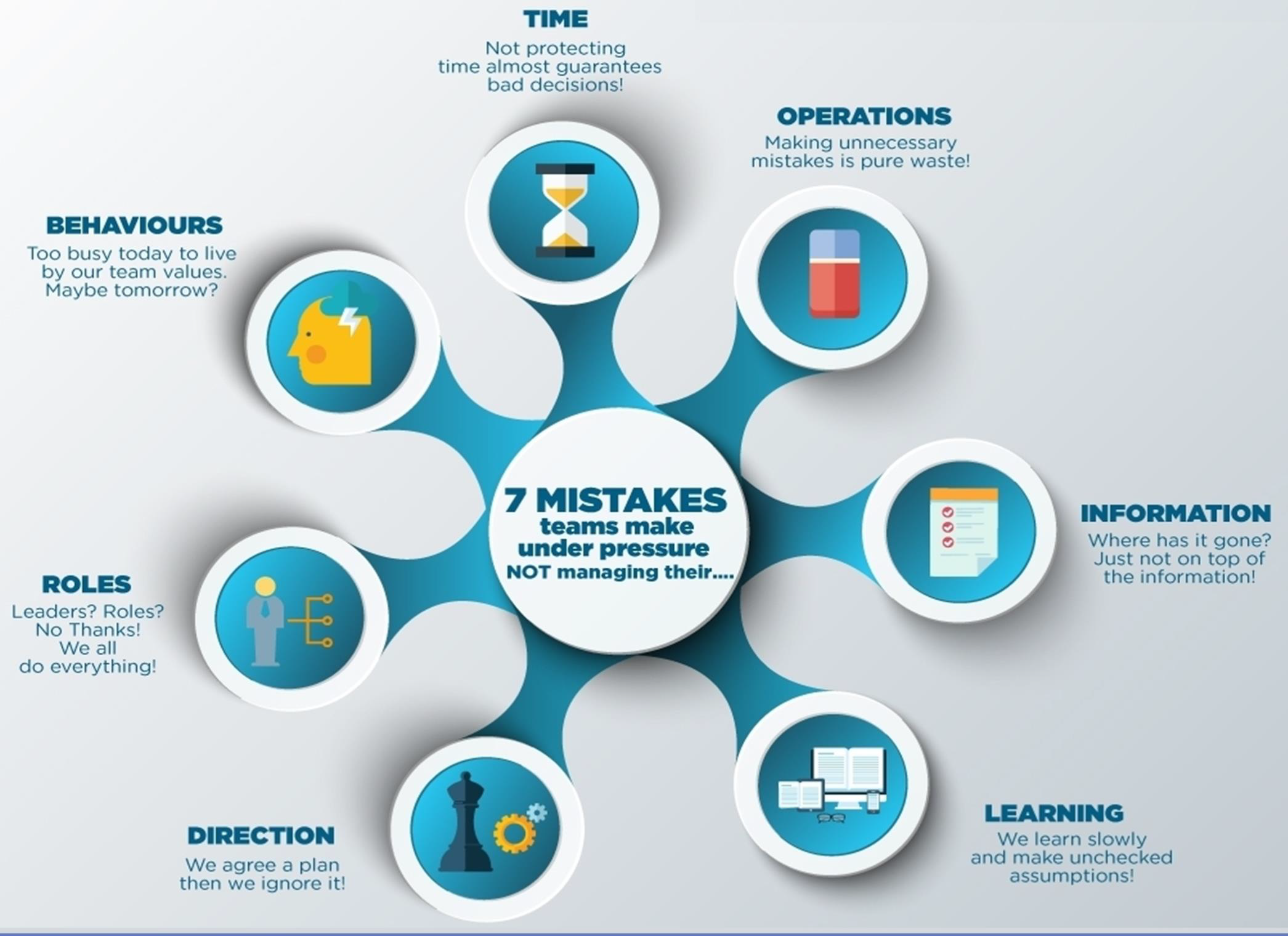
Model #4: RAPPORT model of project team set-up
Aspect
Team setup
Why and when do you need this model
The RAPPORT model is a useful acronym of the fundamental foundations needed to set up your teams for success for key projects or programmes.
The bare essentials
The RAPPORT model suggests 7 things you need to do:
- Roles
- Agreements
- Processes or practices
- Priorities
- Organisational values
- Results
- Targets
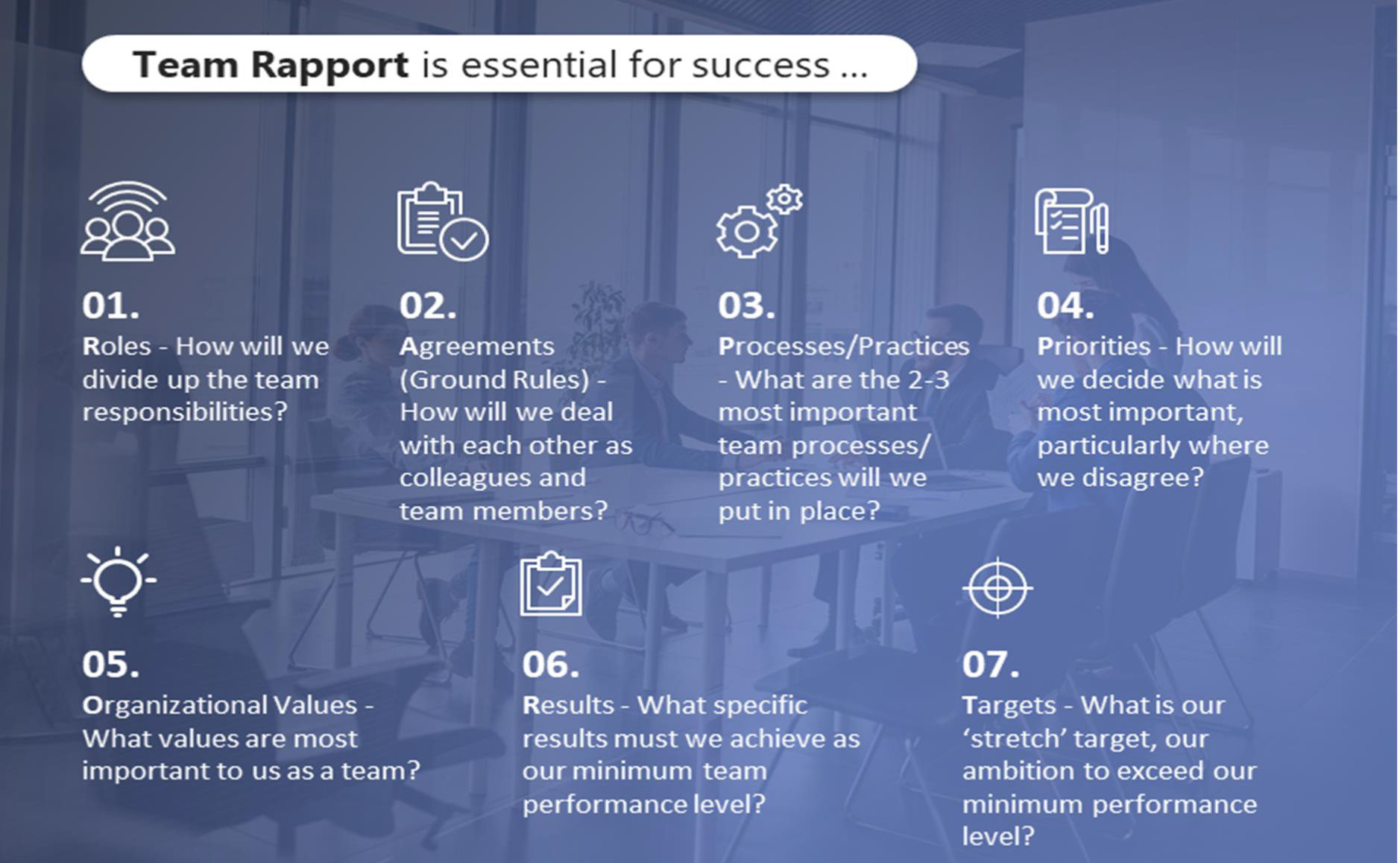
Model #5: Spinning top model - Four dysfunctional team stereotypes
Aspect
Team assessment and team development
Why and when do you need this model
It is very easy to have a team which is nearly working or a team which was working but has stopped working. The four stereotypes model gives you a quick way to diagnose what might be missing in a team.
The bare essentials
Effective teams are like spinning tops – it is all about balance! Two key aspects which need to be in balance are team communications and team role clarity. In either case, too much or too little of each can put a team off balance. The model identifies four stereotypes of teams which are out of balance. Teams may also regress or flip-flop between stereotypes under pressure! Spotting elements of a stereotype in a team is the first step in helping you get it back into balance.
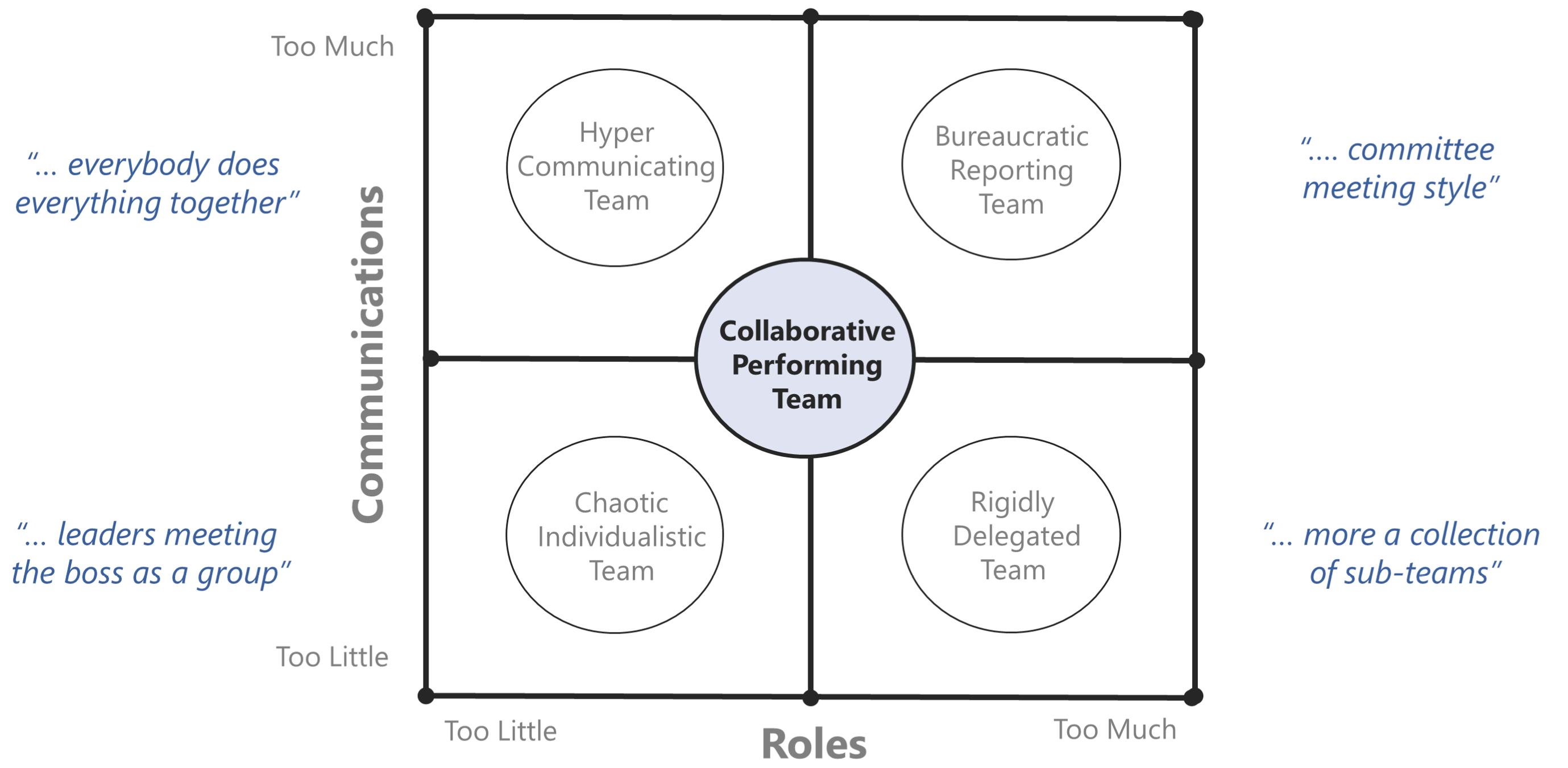
Model #6: Martini model of effective virtual teams
Aspect
Virtual team development
Why and when do you need this model
The Martini model (anytime, anyplace, anywhere) helps you design for different virtual team scenarios.
The bare essentials
- Same time - same place: The traditional team, co-located and synchronous.
- Same time - any place: Different locations without big time zone differences. As well as virtual meetings, teams may be distracted by matrix structures and pressures of local urgencies.
- Same time - any place, any culture: These teams may also have to deal with cultural differences. Team members/leaders may behave in ways unfamiliar/uncomfortable to their virtual colleagues.
- Any time - any place: The most challenging type of virtual team, working across locations, cultures and time zones. These teams must also communicate mostly via asynchronous messaging, with synchronous meetings limited to the overlap in their working day.
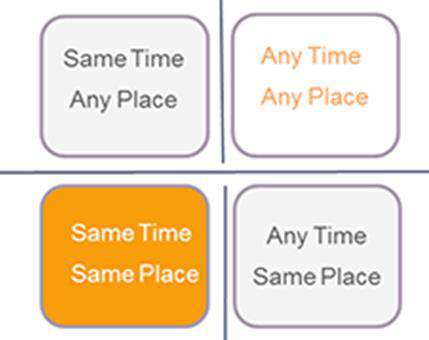
Model #7: Seven team decision-making methods
Aspect
Team operations
Why and when do you need this model
The way a team ‘decides to decide’ is the most important decision it will ever make. However, in many teams, this decision is never explicitly made or, even worse, it is assumed that there is only one team decision-making method which applies equally well in all situations.
The bare essentials
The seven decision-making methods are:
- Consensus
- Majority rule
- Minority rule (sub-committee)
- Averaging
- Expert rule
- Authority rule without discussion
- Authority rule with discussion
At the beginning of the meeting, the team leader should propose and gain agreement on the decision-making method.
Model #8: Four types of team meeting and fivekey meeting roles
Aspect
Team operations
Why and when do you need this model
There are two absolute essentials for successful meetings: knowing what type of meeting you need to have, and ensuring that participants play the right roles for that type of meeting to work.
The bare essentials
The four types of meetings are:
- Operational meetings
- Strategy meetings
- Problem-solving meetings
- Relationship meetings
The five key meeting roles are:
- Customer
- Facilitator
- Timekeeper
- Scribe
- Sensor
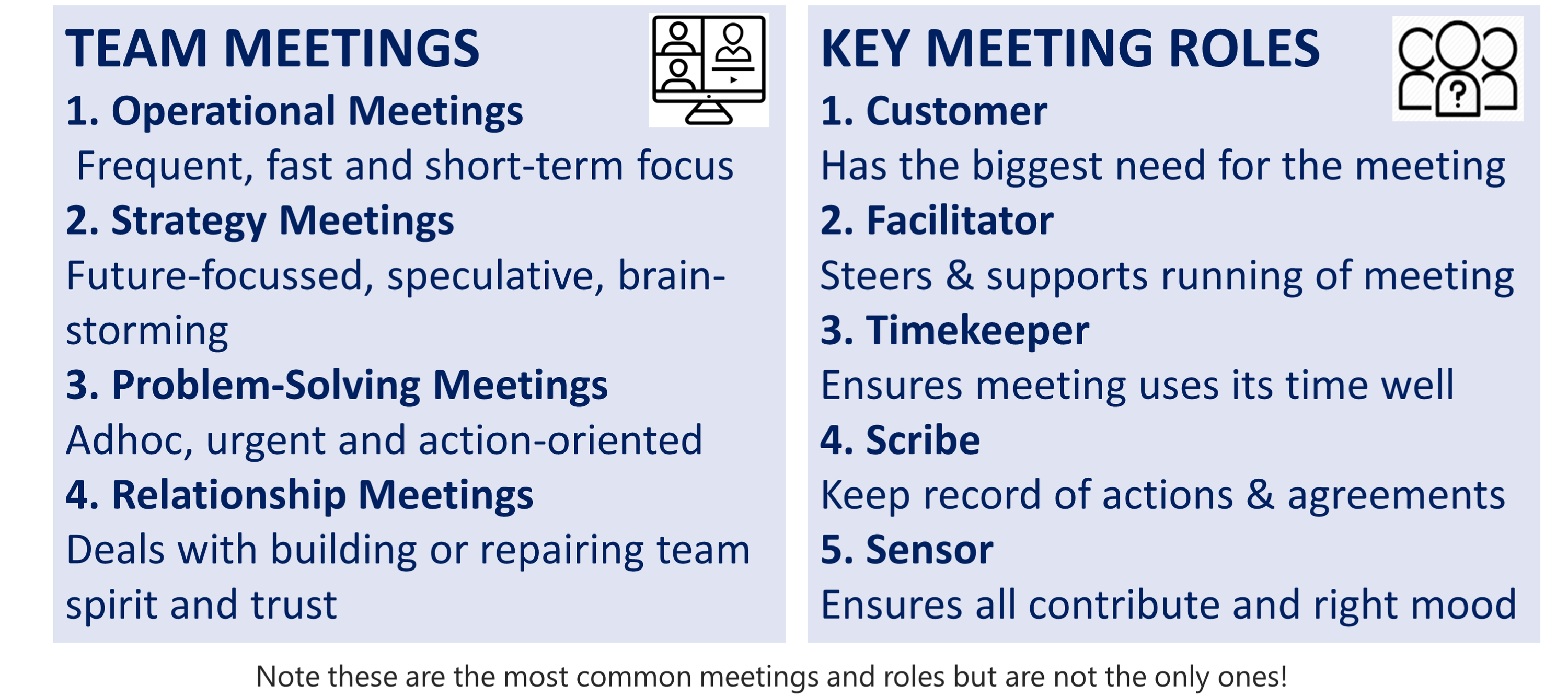
Model #9: Four models of teamwork top performing teams exploit
Aspect
Team development
Why and when do you need this model
The four modes of teamwork, based on research into nature’s teams, is a useful model for developing a team towards its potential by smashing the myth that one size of teamwork fits all tasks.
The bare essentials
There are four different "time-task" modes teams can use for any job:
- Groupwork (partitioned tasks): Lends itself to asynchronous or sequential work such as email or document collaboration.
- Crowdwork (group tasks): Has a place in teams for review meetings, brainstorming and social gatherings. Can also indicate poor role definition or poor use of resources!
- Solowork (individual tasks): An important aspect of team behaviour and sometimes the best way to get things done (e.g. expert work).
- “Teamwork” (team tasks): Requires multiple individuals to perform different tasks concurrently. This is the most complex form of teamwork but is only needed for certain tasks – those requiring division of labour and concurrency.
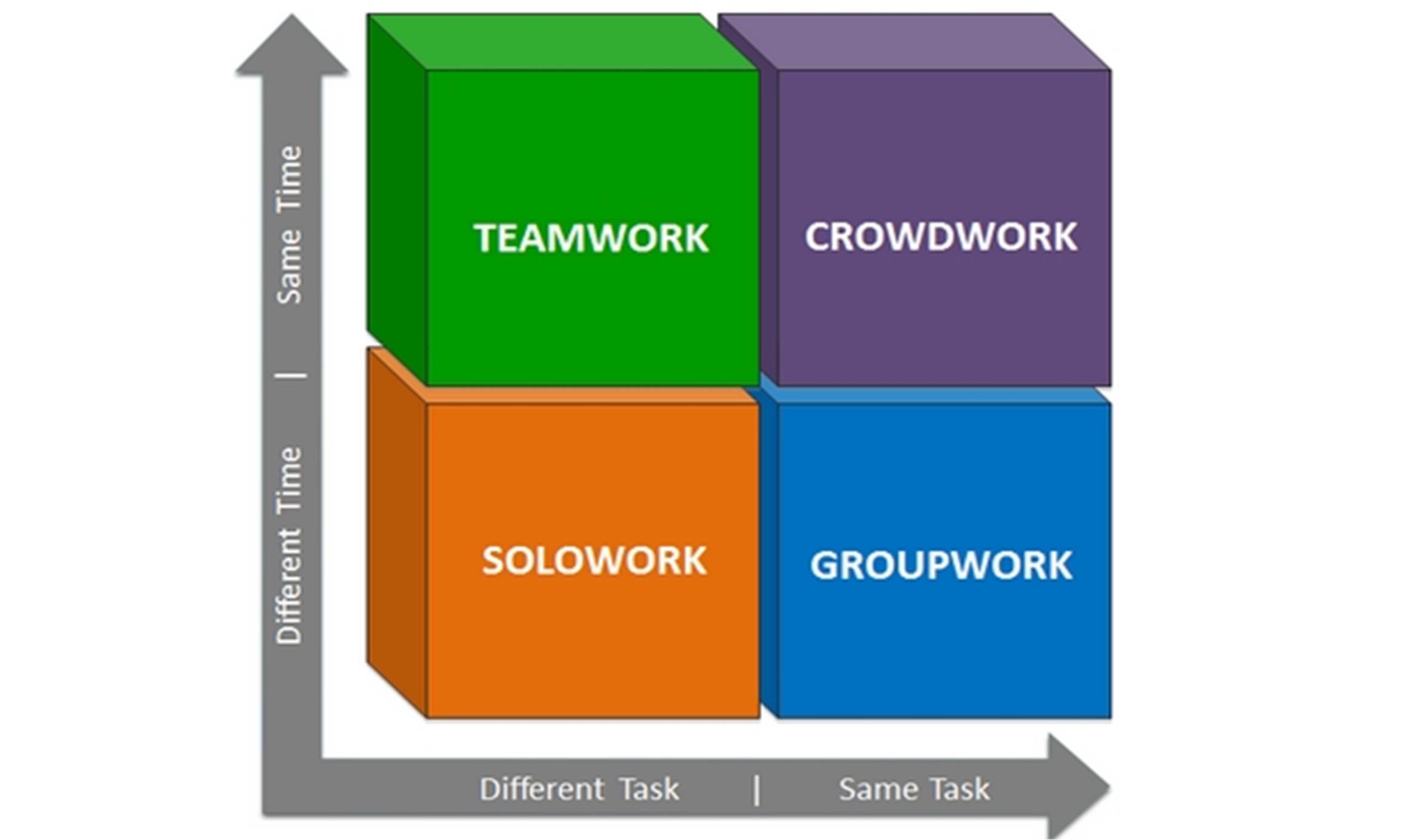
Model #10: Bioteams model: high performance based on nature's teams
Aspect
Team development
Why and when do you need this model
The Bioteams model is a great way to inspire a team to start learning again if it has gone stale or has reached a plateau in its performance.
The bare essentials
There are four Bioteams zones and 12 Bioteams rules:
- Leadership zone:
- Rule 1: Stop controlling
- Rule 2: Team intelligence
- Rule 3: Permission granted
- Connection zone:
- Rule 4: Always on
- Rule 5: Symbiosis
- Rule 6: Cluster
- Execution zone:
- Rule 7: Swarm!
- Rule 8: Tit for tat
- Rule 9: Genetic algorithms
- Organisation zone:
- Rule 10: Self-organising networks
- Rule 11: Porous membranes
- Rule 12: Emerge
